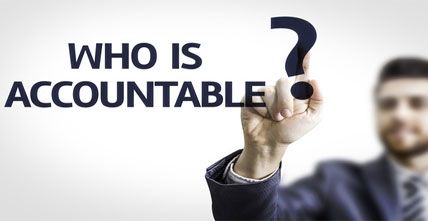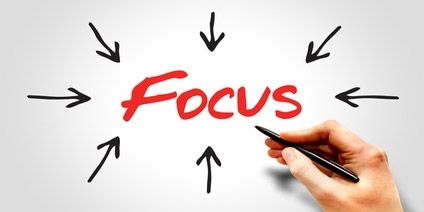Accountability A Contributor to Optimal Performance
Accountability is one of those interesting things that everyone knows is a critical success factor for effective performance but is avoided like the plague.
According to the Business Dictionary, accountability is “The obligation for an individual or organization to account for its activities, accept responsibility for them, and to disclose the results in a transparent manner.”1 It is the obligation to report and explain about what one does and does not do and to take responsibility for the consequences – “being called to account for one’s actions.”2
With accountability there is a relationship in which one individual or organization is in an account-giving relationship with another, e.g. “A is accountable to B when A is obliged to inform B about A’s (past or future) actions and decisions, to justify them, and to suffer punishment in the case of eventual misconduct”.3
Accountability requires a systematic method for accounting. Without the method, there is no accountability.
Resistance – Accountability Avoidance
Accountability seems simple:
- assign responsibility
- make sure there is a meeting of the minds regarding expectations (for example what is to be delivered, how long it will take and how much it will cost to deliver a quality outcome)
- get to work
- communicate regarding progress and completion
- be open about issues and risks
- appreciate feedback from others
- accept the blame or fame associated with the outcome
If it’s so simple and it contributes to optimal performance, why is there resistance to accountability?
Dependencies and Accountability
The principle cause of resistance is related to dependencies on the work of others, particularly if they are not accountable for their performance.
In projects as well as operational activities, there is a need to get a clean relationship between performance and the performer, particularly regarding on-time completion, budget compliance, and quality. When a task requires input, including approval, from others, the task performer relies on the quality and timing of the input. If the input is late or of poor quality, the one who delivered it must be accountable. The expected outcome of the performer of the dependent task must be changed.
If you are accountable for delivering a result at a specific time and you cannot rely on those responsible for your task’s predecessors to account for their performance, how can you be comfortable being accountable for your task? Since your task is probably a predecessor to someone else’s task, there is a ripple effect.
Of course the obvious recourse is to report on progress and the progress, or lack thereof, of the predecessor task. But this can also cause problems.
Quite often, publicizing the performance shortfalls of others is a cultural no-no. Often, there is a lack of effective accountability system to highlight slippage and its impact on subsequent tasks. When it comes to the impact of quality shortfalls, it is even harder to establish a systematic approach for accountability.
So you are stuck. If you report the reality, you’re a bad guy. If you don’t, you take the blame for being late or delivering a substandard deliverable.
Organizational Dynamics
Another cause of accountability avoidance relates to the effects of organizational dynamics. If there are silos and competition or contention between groups, then members of one group resist accountability to others. We often hear “I don’t report to you” when we ask for a status report or accounting of someone’s performance. People feel that their performance shortfalls are no one else’s business. In fact, there are instances in which members of one group object to getting even positive feedback from members of other groups.
In many organizations, it is very difficult if not impossible to isolate accountability to a single individual. Often a point person who might be an account representative or a help desk operator represents the organization to its customers. The customer evaluates the organization’s performance. When bad advice is given or an estimate is blown, is it the representative’s fault? Do we shoot the messenger?
The organization is accountable to its customers for the organization’s performance. At the same time, it is not sufficient to hold an organization accountable. People in organizations need to be specifically assigned to tasks and be accountable for their individual performance.
Who is Responsible – Everyone or No One?
When an organization is accountable either everyone in the organization or no one is accountable. Often, it is no one. Therefore, we must go out of our way to bring accountability down to the individual. When we say that an organization is accountable, the buck has to stop somewhere. It is the organization’s top management that is personally accountable for the organization’s performance.
Who is accountable for setting the stage for failure or sub-optimal performance?
Individuals, project managers, PM Office managers, functional managers, or senior executives should be accountable for designing a healthy and optimally performing project or organization. A project’s or organization’s environment, its policies, tools, and procedures contribute to performance. Those responsible for creating and sustaining policies and procedures should be accountable for the performance that flows from them. If an individual fails to deliver, how much of the failure is attributed to environmental conditions and how much to individual performance?
Consequences
Accountability without consequences does not go far enough to contribute to optimal performance. In some accountability systems, people are unfairly punished for the delivery of poor products or services. In others, accountable parties get a free ride. It is a game. Someone takes responsibility and is accountable, but there are no consequences.
It is important to recognize that while not the best motivators, rewards and negative consequences motivate performance. The consequences can range from simply having to redo work, apologize take retraining, to being fired. They can also include the embarrassment that comes from having poor performance brought to light.
Accountability Without Blaming and Excuses
While there is a need for accountability and consequences, it does not mean that we propose management by fear. For example, if someone makes an error that causes rework, accountability requires that they make their error known and perform the rework to rectify the situation. Should they be fired or penalized? Not unless they make the same error repeatedly or have acted negligently or illegally.
Everyone makes errors. If there is learning and remediation, then accountability has done its job.
If there is a true understanding of accountability, there is no need for excuses. There is, however, a need for cause analysis to enable the learning process and the process improvement that follows.
How does one establish a healthy Accountability System?
- Create strong sponsorship, values, policies and tool supported procedures that promote and institutionalize accountability as a normal and accepted part of the environment.
- Develop clear and meaningful performance agreements (what is to be delivered, by whom, when, for how much, at what level of quality, under what conditions).
- Use metrics that make performance evaluation as objective as possible.
- Use cause and effect analysis to identify the root causes of performance levels (positive and negative) and set the stage for performance improvement.
- Clearly acknowledge the relationships between tasks – use a dynamic project plan or process flow that identifies accountable parties at each step
- Use impact analysis to identify and acknowledge the ripple effect of performance shortfalls.
- Create clear reporting requirements, baselines, and templates that support accountability.
- Use reviews that make use of performance metrics to enable consequences for positive and negative performance.
- Use continuous communication to reinforce the value of accountability.
Don’t forget to leave your comments below.
References
1{www.businessdictionary.com/definition/accountability.htm}
2Sinclair, Amanda (1995). “The Chameleon of Accountability: Forms and Discourses”. Accounting, Organizations and Society20 (2/3): 219–237. doi:10.1016/0361-3682(93)E0003-Y }
3Schedler, Andreas (1999). “Conceptualizing Accountability”. In Andreas Schedler, Larry Diamond, Marc F. Plattner. The Self-Restraining State: Power and Accountability in New Democracies. London: Lynne Rienner Publishers. pp. 13–28. ISBN 1-55587-773-7.


